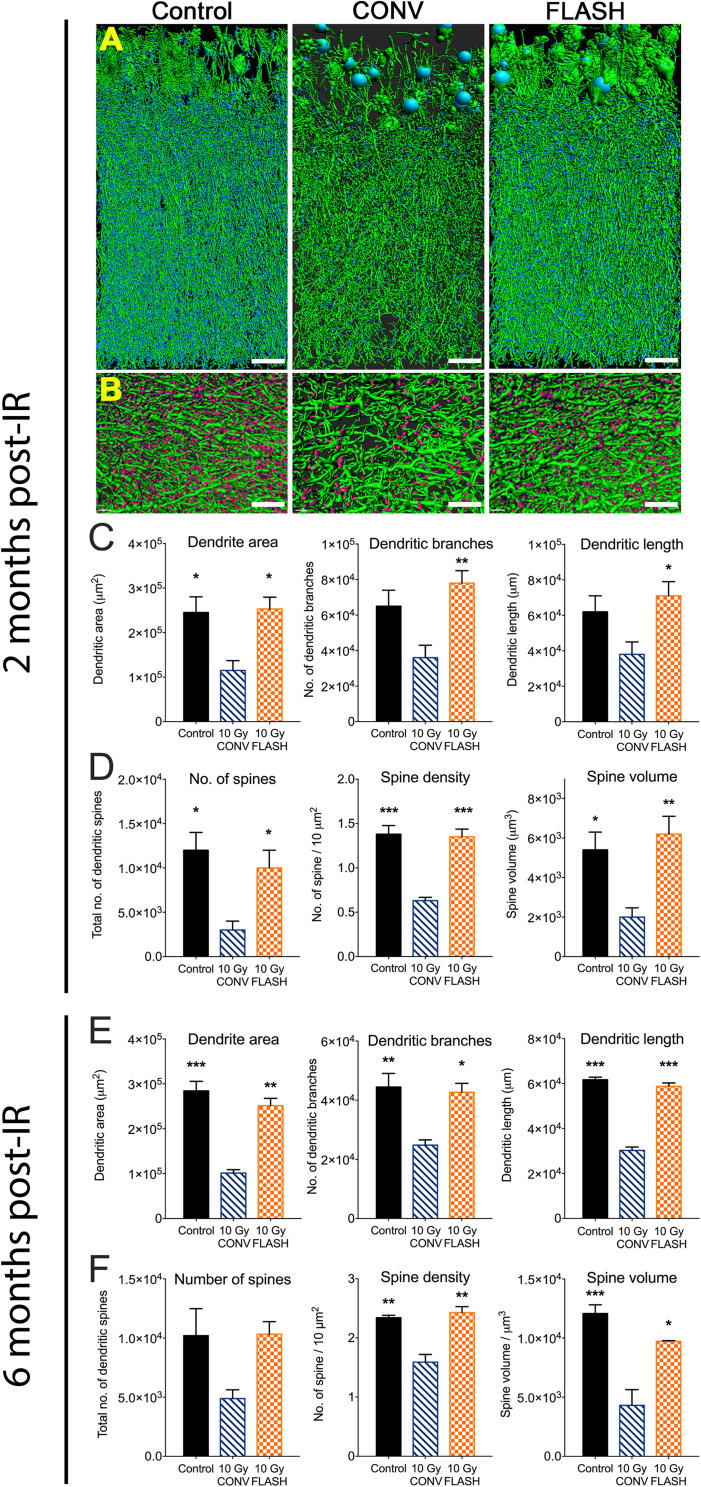MEDICAL SCIENCES Correction for “Long-term neurocognitive benefits of FLASH radiotherapy driven by reduced reactive oxygen species,” by Pierre Montay-Gruel, Munjal M. Acharya, Kristoffer Petersson, Leila Alikhani, Chakradhar Yakkala, Barrett D. Allen, Jonathan Ollivier, Benoit Petit, Patrik Gonçalves Jorge, Amber R. Syage, Thuan A. Nguyen, Al Anoud D. Baddour, Celine Lu, Paramvir Singh, Raphael Moeckli, François Bochud, Jean-François Germond, Pascal Froidevaux, Claude Bailat, Jean Bourhis, Marie-Catherine Vozenin, and Charles L. Limoli, which was first published May 16, 2019; 10.1073/pnas.1901777116 (Proc. Natl. Acad. Sci. U.S.A. 116, 10943–10951).
The authors note that Fig. 4 appeared incorrectly. In Fig. 4B, an image of dendritic spine densities was duplicated for both the CONV and FLASH irradiation modalities. The corrected figure and its legend appear below.
Fig. 4.
FLASH-RT preserves host neuronal morphology 2 and 6 mo postirradiation (post-IR). (A) Neuronal dendrites (green) along with major branch points (blue) are shown in each IR cohort. The neuronal arborization is reduced 1 mo post-IR by CONV IR (10-Gy CONV) compared with controls, an effect not apparent after FLASH. (B) Higher magnification view of dendritic spines (red) against the dendritic tree (green). Dendritic spine numbers are reduced following CONV IR compared with controls, an effect again not evident in the FLASH-irradiated brain. (Scale bars: A, 20 μm; B, 5 μm.) (C) Reductions in dendritic area, length, and branching following CONV IR compared with controls were evident, effects that were all significantly preserved in the FLASH-irradiated brain. (D) Similar findings were evident following quantification of dendritic spines, where reductions in spine numbers, density, and volume were found after CONV IR compared with controls. (E) Analyses of granule cell neurons at 6 mo post-IR reveals persistent reductions in dendritic area, length, and branching following CONV IR compared with controls, effects that were all ameliorated significantly in the FLASH-irradiated brain. (F) Similar findings were again evident following quantification of dendritic spines, where reductions in spine numbers, density, and volume were found after CONV IR compared with controls. With the exception of spine numbers, FLASH again preserved dendritic spine parameters significantly. Data are expressed as mean ± SEM (n = 4 animals per group). P values were derived from one-way ANOVA followed by Bonferroni multiple comparison post hoc analysis: *P < 0.05, **P < 0.01, ***P < 0.001.



